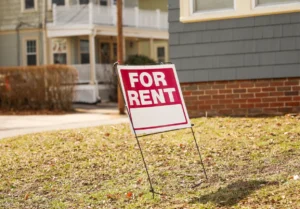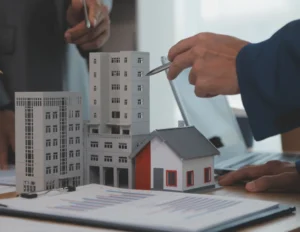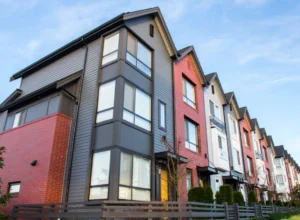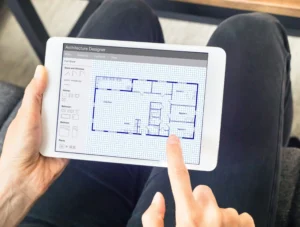
How Often Can a Landlord Do a Walkthrough: The Ultimate Guide
A landlord can do a walkthrough as often as necessary within legal limits. As a landlord, conducting regular walkthroughs of your rental property is essential to ensure the condition of the unit is maintained and any potential issues are addressed promptly.
By conducting walkthroughs, landlords can identify and fix any maintenance or repair needs, ensure compliance with lease terms, and document the condition of the property before and after a tenant’s occupancy.
However, it is crucial to be aware of local laws and regulations that dictate the frequency and notice requirements for conducting walkthroughs.
While there is no specific universal rule, it is generally recommended to schedule walkthroughs at reasonable intervals, such as once every six months or annually, to respect the tenant’s privacy rights.
This proactive approach can help landlords maintain a positive landlord-tenant relationship while also protecting their investment.
The Purpose Of Walkthroughs
The purpose of walkthroughs is an essential aspect of being a landlord and maintaining a rental property.
Conducting regular walkthroughs not only helps to identify potential issues and damage but also ensures that the property is being properly maintained by the tenants.
These walkthroughs play a crucial role in protecting the landlord’s investment and ensuring the long-term integrity of the property.
Importance Of Conducting Regular Walkthroughs
Regular walkthroughs are vital for landlords as they provide an opportunity to actively monitor and assess the condition of their rental property.
Let’s explore some key reasons why conducting these walkthroughs at regular intervals is crucial:
Potential Issues And Damage
Walkthroughs allow landlords to visually inspect the property, looking for any signs of damage, wear and tear, or potential issues that may need immediate attention.
This can include issues such as leaks, pest infestations, malfunctioning appliances, or damage caused by tenants.
By identifying such issues early on, landlords can take prompt action to mitigate further damage and prevent any costly repairs in the future.
Paying Too Much For Insurance?
Get a FREE quote to insure your rental properties for less.
Ensuring Property Is Being Properly Maintained
Regular walkthroughs provide an opportunity for landlords to ensure that their rental property is being properly maintained by the tenants.
This can encompass various aspects such as cleanliness, proper usage of appliances and fixtures, adherence to lease agreements, and compliance with any rules or regulations.
These inspections allow landlords to address any concerns or non-compliance issues promptly, ensuring the property remains in good condition and meets desired standards.
Protecting Landlord’s Investment, Ensuring Longevity
One of the primary reasons for conducting regular walkthroughs is to protect the landlord’s investment in the rental property.
By actively inspecting and monitoring the property, landlords can identify any potential problems that may jeopardize the value and longevity of their investment.
Timely repairs or maintenance can help preserve the property’s integrity, enhance its market value, and attract quality tenants in the long run.
Regular walkthroughs ultimately provide an opportunity to safeguard the landlord’s financial interests.
Legal Considerations For Conducting Walkthroughs
In the landlord-tenant relationship, conducting walkthroughs is an important practice that benefits both parties.
However, it is crucial for landlords to be aware of the legal considerations surrounding these walkthroughs to ensure compliance and protect the rights of both themselves and their tenants.
Familiarizing Oneself With Local Laws And Regulations
Familiarizing oneself with local laws and regulations is the first step in conducting legally compliant walkthroughs.
Landlord-tenant laws can vary from state to state and even between municipalities, so it is essential to understand the specific requirements that govern your rental property’s jurisdiction.
Establishing Frequency And Notice Requirements
One crucial aspect of conducting walkthroughs is establishing the frequency at which they can be conducted and the notice requirements that must be adhered to.
These requirements can vary by jurisdiction, so it is vital to consult the relevant landlord-tenant laws to determine how often you can legally perform walkthroughs and how much notice you must provide to your tenants.
Proper Documentation And Record-keeping
Proper documentation and record-keeping are essential during walkthroughs to protect both landlords and tenants.
It is crucial to maintain detailed records of each walkthrough, including the date, time, purpose, and any observations or concerns noted during the inspection.
These records can serve as evidence in the event of disputes or legal proceedings.
Tenant objections and privacy concerns are common issues that landlords may encounter when conducting walkthroughs.
It is essential to address these concerns respectfully and within the bounds of the law.
Clearly communicate the purpose and necessity of the walkthroughs to your tenants, emphasizing their role in ensuring the rental property remains in good condition and addressing any potential maintenance or safety issues.
Respecting your tenants’ privacy is paramount during walkthroughs.
Ensure that you comply with any legal requirements regarding advance notice, reasonable times for inspections, and avoiding unnecessary intrusions into their personal space.
Factors To Consider When Deciding The Frequency
A walkthrough is a crucial aspect of being a landlord, as it allows you to assess the condition of your property and ensure that your tenants are complying with the lease agreement terms.
However, determining how often a landlord should conduct a walkthrough can be a decision that requires careful consideration.
Several factors come into play when deciding the frequency of walkthroughs, including:
Type Of Property And Tenant Demographics
The type of property and the demographics of your tenants can significantly impact how often you should conduct a walkthrough.
For example, if you own a single-family home rented by a family with children, there may be a higher chance of wear and tear on the property.
In such cases, it may be necessary to conduct walkthroughs more frequently to identify any maintenance or safety concerns.
On the other hand, if you own an apartment complex with long-term tenants who have a history of maintaining the property well, you may be able to conduct walkthroughs less frequently.
Lease Agreement Terms And Conditions
The terms and conditions outlined in the lease agreement can also influence the frequency of walkthroughs.
If the lease agreement explicitly states that walkthroughs will be conducted periodically, it is important to adhere to those terms.
This helps ensure that both parties are meeting their obligations and provides an opportunity to address any potential issues early on.
It is recommended to review the lease agreement carefully to determine if there are any specific requirements regarding the frequency of walkthroughs.
Property Condition And Maintenance History
The condition of the property and its maintenance history can provide valuable insights into how often a walkthrough should be conducted.
If the property is relatively new or has a history of being well-maintained with minimal issues, walkthroughs may be less frequent.
However, if the property requires frequent repairs or if there have been previous instances of non-compliance with the lease agreement, conducting more frequent walkthroughs can help ensure that any necessary repairs or improvements are addressed promptly.
Landlord’s Level Of Trust In The Tenant
The level of trust you have in your tenant can also play a role in determining the frequency of walkthroughs.
If you have a long-standing relationship with a responsible tenant who consistently maintains the property, you may feel comfortable conducting walkthroughs less often.
However, if you have just started renting to a new tenant or have had issues in the past, more frequent walkthroughs can provide peace of mind and help establish a better tenant-landlord relationship.
Recommended Frequency Guidelines For Walkthroughs
As a landlord, conducting regular walkthroughs of your rental property is essential to ensure its maintenance and address any potential issues.
However, determining how often you should perform a walkthrough can be challenging.
To assist you, we have put together some recommended frequency guidelines based on different factors.
General Recommendations For Different Property Types
When it comes to the frequency of walkthroughs, it is important to consider the type of property you own.
The recommended frequency for walkthroughs might vary depending on whether you own an apartment building, a single-family home, or another type of rental property.
| Property Type | Recommended Walkthrough Frequency |
| Apartments | Every 3-6 months |
| Single-Family Homes | Every 6-12 months |
| Condos | Every 6 months |
| Commercial Properties | Every 6-12 months |
Frequency Suggestions Based On Tenant Turnover Rates
The turnover rate of tenants in your property can also influence how often you should conduct walkthroughs.
Higher turnover rates may indicate a need for more frequent inspections to ensure that any damage or issues are identified and addressed promptly.
Here are some frequency suggestions based on tenant turnover rates:
- Low Turnover (less than 20% per year) – Every 6-12 months
- Moderate Turnover (20-40% per year) – Every 3-6 months
- High Turnover (more than 40% per year) – Every 1-3 months
Impact Of Specific Tenant Behaviors On Walkthrough Frequency
The behavior of your tenants can also affect how often you should conduct walkthroughs.
Certain tenant behaviors, such as being consistently late with rent payments or causing significant damage to the property, may necessitate more frequent inspections to protect your investment.
Consider the following factors when evaluating the impact of specific tenant behaviors:
- Conduct a walkthrough every month to address potential issues.
- Perform walkthroughs every 3 months to ensure any damage is identified and handled promptly.
- Increase walkthrough frequency to every 2-3 months to monitor adherence to lease terms.
Preparing For The Walkthrough
Before conducting a walkthrough of a rental property, it is essential for landlords to properly prepare.
By planning and scheduling the walkthrough, setting clear expectations and objectives, and gathering necessary documentation and equipment, landlords can ensure a smooth and productive inspection of their property.
Planning And Scheduling The Walkthrough
When it comes to planning and scheduling a walkthrough, landlords should consider the convenience of both themselves and their tenants.
It is crucial to communicate with tenants in advance and find a date and time that works for everyone involved.
This ensures that tenants will be present during the inspection, allowing for a comprehensive and accurate walkthrough.
Setting Clear Expectations And Objectives
Prior to the walkthrough, it is important for landlords to establish clear expectations and objectives.
This means communicating the purpose of the inspection to the tenants and making them aware of what areas of the property will be examined.
By setting clear expectations, tenants can properly prepare their space and address any specific concerns they may have.
Gathering Necessary Documentation And Equipment
In order to conduct a thorough walkthrough, landlords should gather all necessary documentation and equipment beforehand.
This includes any forms, checklists, or contracts that need to be completed, as well as any tools or materials required to properly assess the property.
By having everything prepared in advance, landlords can save time and ensure that the inspection is efficient and accurate.
Executing The Walkthrough
Once you have informed your tenant of the upcoming walkthrough and agreed on a suitable date and time, it’s time to execute the inspection.
This crucial step allows you to assess the condition of your property and identify any potential issues that need to be addressed.
By following these steps, you can ensure a thorough and efficient walkthrough that benefits both you and your tenant.
Conducting A Thorough Inspection Of Each Area
During the walkthrough, it’s essential to conduct a meticulous inspection of every area of the rental property.
Start from the entrance and move systematically from room to room, paying close attention to key areas such as the kitchen, bathrooms, bedrooms, and living spaces.
Check for any signs of damage, wear and tear, or maintenance issues that need your attention.
Take note of any cracks in the walls or ceilings, leaky faucets, malfunctioning appliances, or faulty electrical fixtures. Inspect the floors, windows, and doors for any signs of damage or degradation.
Ensure that the heating, cooling, and ventilation systems are in proper working condition. By leaving no corner unchecked, you can address any potential problems promptly.
Any Immediate Concerns Or Issues
If you come across any immediate concerns or issues during the walkthrough, it is crucial to address them without delay.
Whether it’s a broken window, a leaking pipe, or a malfunctioning smoke detector, prompt action is necessary to ensure the safety and satisfaction of your tenant.
By promptly attending to maintenance and repair needs, you demonstrate to your tenant that you take their concerns seriously and are committed to maintaining a comfortable and livable environment.
This proactive approach also helps prevent minor issues from escalating into major problems, saving you time, money, and potential headaches in the future.
Communicating Effectively With The Tenant
During the walkthrough, effective communication with your tenant is key.
Encourage them to express any concerns or issues they may have noticed in the rental property.
Listen attentively and provide reassurance that you will address their concerns promptly.
Take this opportunity to communicate any specific expectations you have for the tenant regarding the care and maintenance of the property.
Clearly explain the importance of regular cleaning, proper waste disposal, and adhering to any rules or guidelines outlined in the lease agreement.
Open lines of communication help foster a positive landlord-tenant relationship and ensure that both parties are on the same page.
Documenting Findings And Taking Photographs If Necessary
To maintain a record of the property’s condition, it is crucial to document your findings during the walkthrough.
Take detailed notes of any observed damages, maintenance needs, or necessary repairs.
Use your smartphone or a digital camera to capture photographs, focusing on areas that require attention.
Follow-up Actions After The Walkthrough
Once the walkthrough of a rental property is completed, there are important follow-up actions that a landlord needs to take.
These actions help ensure that any issues discovered during the inspection are addressed promptly and that both the landlord and the tenant are clear on what steps are to be taken next.
Let’s dive into the three key follow-up actions that should be undertaken after a walkthrough.
Reviewing The Inspection Report And Documenting Repairs
Reviewing the inspection report and documenting repairs is a crucial step in maintaining the condition of a rental property.
This report serves as a record of the property’s condition before and after the tenant’s occupancy.
It is essential to carefully go through the report and prioritize any repairs or maintenance tasks that may be necessary.
As a landlord, it’s important to document repairs to ensure transparency and to have a record of the work that has been done.
You can create a digital or physical file that includes details of the repairs, such as the date of completion, the description of the issue, and the steps taken to fix it.
This documentation can come in handy if any disputes arise later on.
Addressing Any Lease Violations Or Breaches
If the walkthrough reveals any lease violations or breaches, it is essential to address them promptly.
These violations could include unauthorized pets, smoking in restricted areas, or alterations made to the property without permission.
Failure to address these violations can lead to more significant problems in the future and may even result in legal disputes.
When addressing lease violations, it is important to follow the terms outlined in the lease agreement.
If a violation is discovered, notify the tenant in writing and provide them with a reasonable amount of time to rectify the situation.
In cases where immediate action is required, such as an imminent safety hazard, it may be necessary to involve legal channels or take appropriate measures as outlined by local laws.
Establishing A Timeline For Future Walkthroughs
Regular walkthroughs help ensure that the property is being properly maintained and provide an opportunity for both the landlord and the tenant to address any concerns.
Establishing a timeline for future walkthroughs sets clear expectations and allows for proactively addressing any issues that may arise.
When determining the frequency of future walkthroughs, consider the condition of the property, the length of the lease term, and any specific requirements or concerns that may exist.
Document the agreed-upon timeline in writing and provide a copy to the tenant.
This will help foster open communication and provide a clear structure for future inspections.
Handling Tenant Objections And Privacy Concerns
Addressing tenant objections and privacy concerns is crucial when it comes to conducting regular walkthroughs as a landlord.
Tenants may have reservations about allowing their living spaces to be entered when they are not present.
It is important for landlords to handle these objections delicately, ensuring that tenants are aware of the benefits of walkthroughs while respecting their privacy rights.
Educating Tenants On The Benefits Of Walkthroughs
When it comes to educating tenants on the benefits of walkthroughs, communication is key.
By informing tenants about the purposes of regular inspections, landlords can help them understand the significance of these visits. Key benefits of walkthroughs include:
Prompt identification of maintenance issues
Regular walkthroughs allow landlords to promptly identify any maintenance issues in the rental property.
By catching these problems early on, tenants can avoid potential inconveniences and ensure a well-maintained living space.
Promoting tenant satisfaction
Thorough inspections help landlords ensure that the rental property is meeting the tenants’ needs.
By addressing any concerns or making necessary improvements, landlords can enhance tenant satisfaction and maintain a positive landlord-tenant relationship.
Enhancing safety and security
Regular walkthroughs allow landlords to assess the safety and security of the rental property.
By detecting any potential hazards or security risks, landlords can take proactive measures to ensure the well-being of their tenants.
Privacy Rights Are Respected
Respecting tenants’ privacy rights is of utmost importance when conducting walkthroughs.
To ensure privacy and build trust, landlords should adhere to the following guidelines:
Provide proper notice
Landlords must provide tenants with sufficient notice before conducting a walkthrough.
The specific notice period may vary based on local laws or the terms of the lease agreement.
Providing advance notice allows tenants to prepare for the visit and feel more comfortable about their privacy.
Maintain transparency
Landlords should be transparent about the purpose and duration of the walkthrough.
Clear communication can help alleviate any concerns tenants may have about their privacy being violated.
Respect personal belongings
During walkthroughs, landlords should avoid touching or moving tenants’ personal belongings unless absolutely necessary for inspection purposes.
This helps preserve tenants’ privacy and demonstrates respect for their personal space.
Follow legal requirements
Landlords should familiarize themselves with local laws and regulations regarding tenant privacy rights.
By ensuring compliance with these laws, landlords can protect tenants’ privacy and avoid any potential legal issues.
Property Damage And Breaches
When it comes to managing a rental property, addressing property damage and breaches is a critical aspect of a landlord’s role.
Regular walkthroughs of the property can help identify any damages or breaches of the rental agreement early on, allowing landlords to take appropriate action.
Assessing The Severity Of Damages
Assessing the severity of damages is crucial in determining the appropriate course of action.
Landlords should conduct thorough inspections of the property during walkthroughs and document any damages or breaches they come across.
This documentation should include clear descriptions, photographs, and dates to ensure accuracy and provide evidence if needed.
By categorizing damages into different levels of severity, landlords can prioritize repair and maintenance tasks accordingly.
It is essential to distinguish between normal wear and tear and excessive damage caused by the tenant’s negligence or intentional actions.
Providing tenants with a clear understanding of what constitutes excessive damage can help prevent further issues down the line.
Implementing Appropriate Consequences And Charges
Once damages have been assessed, landlords need to implement appropriate consequences and charges.
This ensures that tenants are held accountable for their actions while maintaining a fair and professional relationship.
Landlords should establish clear guidelines regarding the consequences for property damages and breaches in the rental agreement.
For minor damages that fall within the realm of normal wear and tear, landlords may choose to absorb the costs themselves.
However, for damages that go beyond normal wear and tear, it is reasonable to deduct the necessary repairs or replacement costs from the tenant’s security deposit.
Clearly outlining the circumstances under which charges will be imposed can help minimize disputes and ensure transparency.
Mediating Conflicts And Disputes With Tenants
Conflict resolution is an essential part of addressing property damage and breaches.
Landlords should approach conflicts and disputes with tenants in a fair, unbiased, and professional manner.
Open and clear communication plays a crucial role in resolving these issues effectively.
When conflicts arise, it is important to listen to both sides of the story and gather all relevant information.
Mediation can be conducted in person or through written communication, depending on the situation.
The goal is to find a mutually beneficial solution that addresses the damage or breach and helps maintain a positive landlord-tenant relationship.
Frequently Asked Questions On How Often Can A Landlord Do A Walkthrough?
How Often Should A Walk Through Inspection?
A walk-through inspection should be done regularly for maintenance and safety purposes.
What Do Landlords Look For In A Walkthrough?
During a walkthrough, landlords typically look for any damages, cleanliness, and general upkeep of the property.
Final Words
Landlords have the right to conduct walkthroughs of their rental properties but must do so within certain limitations.
The frequency of these inspections may vary depending on state laws, the terms of the lease agreement, and the reason behind the inspection.
Landlords should always prioritize respecting their tenants’ privacy and providing sufficient notice before performing a walkthrough.
By striking a balance between their rights and their tenants’ privacy, landlords can maintain a positive relationship and ensure the safety and well-being of their rental properties.
Source: Rental Awareness
Disclaimer: All content provided here-in is subject to AAOA’s Terms of Use. Nothing contained on this website constitutes tax, legal, insurance or investment advice, nor does it constitute a solicitation or an offer to buy or sell any security or other financial instrument. AAOA recommends you consult with a financial advisor, tax specialist, attorney or other specialist who is able to properly advise you.













 Accessibility
Accessibility